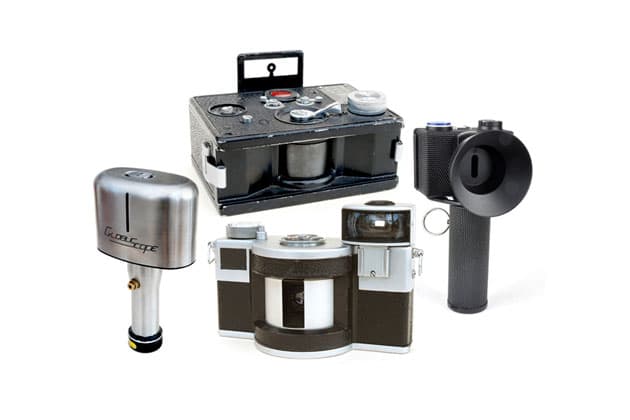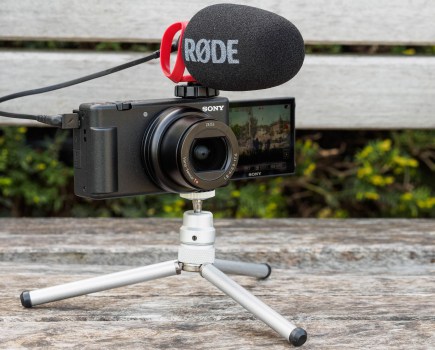Panoramic cameras are nearly as old as photography itself. The Megaskop, which is usually accepted as the first model, was made in 1844 to produce super-wide daguerreotypes on silver-plated copper. The theme continued through the wet-plate era, with cameras such as the Sutton Panoramic, when glass plates had to be made just prior to exposure, used wet and developed immediately after. But the craze really took off with the advent of rollfilm in 1888.
With the dawn of the 20th century, rollfilm panoramic cameras were divided into two distinct types: swing-lens cameras, such as the Kodak Panoram and Al-Vista; and rotating cameras such as the Kodak Cirkut. There was a resurgence of interest in the 1950s and ’60s with a new rage of 35mm panoramic models, and those are the cameras most easily found second-hand today, plus a couple of contemporary models that can still be bought new.
In a swing-lens camera, the film is loaded around a curve and the lens is fixed at one end of a short tube with a slit at the other end. With the camera pointing forward, the lens points to one side. During exposure, the lens swings in an arc, building up its image on the film as it swings. Swing-lens cameras such as the Horizon are still available new today for use with 35mm film. Cameras such as the more rare Noblex 6/150 shoot super-wide images on 120 rollfilm.
A rotating camera incorporates a motor that revolves the camera while the film is driven from one spool to another, past a slit at the focal plane. Such cameras are capable of shooting a complete 360° image, but are more traditionally used to rotate through only 180°. If you remember having your photograph taken at school with one of those cameras that scanned hundreds of children arranged in a huge semi-circle, it is likely that you have seen a Kodak Cirkut rotating camera in action.
In the last days of film, there was a craze for inexpensive 35mm panoramic cameras that were simply 35mm compacts in which the film plane had been masked top and bottom to create a panoramic effect.

This super-wide picture of school children and teachers was taken in 1926 using a Kodak Cirkut rotating camera
Shooting and processing tips
- Use the in-built spirit level found on most panoramic models to keep the camera absolutely level.
- Keep your fingers away from the edges of swing-lens cameras to prevent them from recording at the edges of the image.
- Shoot with rotating cameras above your head height to ensure you don’t include your face in the panoramic image.
- Because subjects at each end of a panoramic image are further away from the camera than those in the centre, the image appears to curve forward in the middle and recede towards the edges. Accept and allow for this in your picture composition.
- If you have the film developed commercially, tell the processor to return the negatives on a roll, rather than cutting them up in the usual way.
- Use a digital film scanner to scan negatives and make digital prints.
Buyer’s guide to the best panoramic cameras
The FT-2
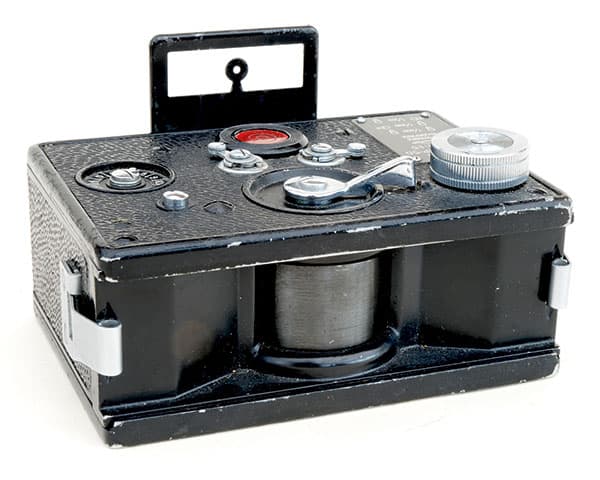
- Launched 1958
- Type Swing lens
- Image size 24x108mm
- Guide price £75-£100

This panoramic image was taken with the FT-2
The FT-2 was made by the Russian company Krasnogorsk. It is shaped like a small black brick, with a curved film path, and produces 12 images on a 36-exposure roll of 35mm, each one the size of three 35mm frames side by side.
The focus is fixed, as is the aperture at around f/5. Exposure is controlled by shutter speeds alone, using two levers. When both point down, the shutter speed is 1/400sec; left lever pointed down and right lever pointed right gives 1/200sec; left lever pointed left and right lever pointed down gives 1/100sec. A lever at the front of the body tensions the shutter, then a small button to the side releases it. The faster the shutter speed, the faster the lens swings. A circular spirit level is built in to ensure you hold the camera level.
A dial on top of the camera, numbered 1 to 12, counts the frames. As the film is wound, a pointer on the dial must rotate three times before stopping it at the next number.
The camera winds film from one non-standard cassette to another, so a darkroom or changing bag is needed to load film from a normal cassette into an FT-2 one. When buying, make sure the camera comes with both cassettes.
The Globuscope

- Launched 1981
- Type Rotating
- Image size 24x300mm
- Guide price £750-£1,000

This full 360° picture was taken with the Globuscope on Westminster Bridge in 1981, when the camera was launched
The Globuscope is an American invention, and is oval-shaped with a slit in one face and a large handle on the base. Behind the slit, a 25mm lens projects its image through another slit and onto the film. There are two shutter speeds – 1/200sec and 1/40sec – changed by inserting an Allen key into the tripod bush. Apertures run from f/3.5-f/16, as well as a closed option.
A clockwork motor is wound by turning the handle on the base. The aperture control is moved from its closed position to the required f-stop and the shutter release pressed immediately. Depending on how long the release is pressed, the camera will rotate through 180°, 360°, 540° or 720°, after which the aperture control is returned to its closed position to prevent light fogging.
As the body rotates, the film moves past the slit at the back of the lens and the image is built up on the emulsion. The most practical and effective way to use the camera is to mount it on a tripod, then squat down beneath it as you then reach up to release the shutter. If you stand behind the camera in the conventional way your out-of-focus face will appear right in the middle of the panoramic image.
Allowing the camera to rotate twice and then cropping out the best composition from the resulting image is a good way to achieve the best picture. The downside is that this method only gives four pictures to a roll of 36-exposure film!
Horizont

- Launched 1967
- Type Swing lens
- Image size 24x58mm
- Guide price £100-£120
The Horizont accepts conventional 35mm cassettes. It has a fixed-focus lens, with three shutter speeds of 1/30sec, 1/60sec and 1/125sec, and apertures of f/2.8-f/16. The lens sits behind a slit in a rotating barrel – the faster it swings, the shorter the shutter speed. When buying, make sure it has its panoramic viewfinder, which fits over the recessed rewind knob.

Gardens at the Palace of Versailles in France, shot with a Horizon panoramic camera
Horizon 202
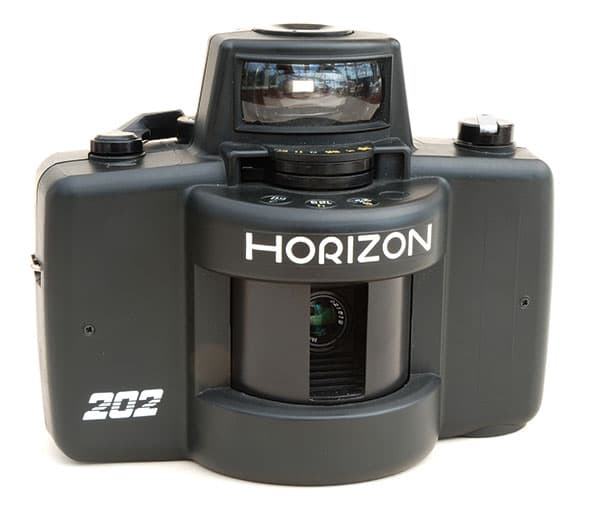
- Launched 1989
- Type Swing lens
- Image size 24x58mm
- Guide price £110-£130
The Horizon 202 is an updated version of the Horizont, with a plastic body rather than metal and a built-in panoramic viewfinder added. Apertures are adjustable from f/2.8–f/16. Shutter speeds of 1/60sec to 1/125sec are marked on two scales: yellow for slow speeds, white for fast, which are selected according to whether a lever on the top-plate is set against a yellow or a white dot.
Noblex 135
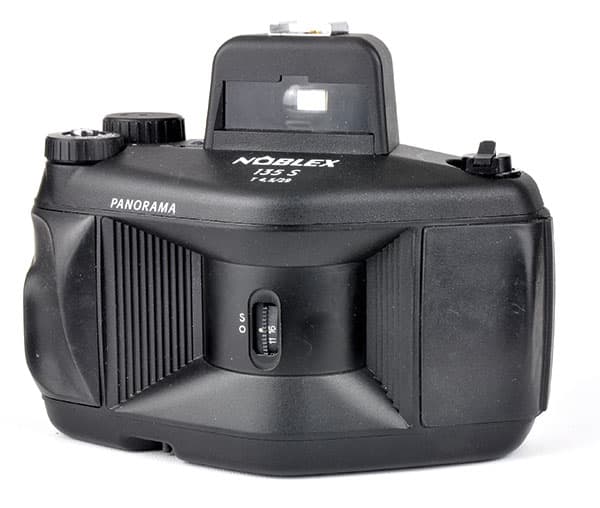
- Launched 1992
- Type Swing lens
- Image size 24x66mm
- Guide price £250-£300
Only recently discontinued, the Noblex 135 is the best of the swing-lens cameras today. It uses a battery-driven motor to turn the lens, contained within a cylinder that rotates 360°, but the movement begins before the start of the exposure. This ensures that the lens has accelerated to its optimum speed so the image is evenly exposed across its width. It has a panoramic viewfinder, 1/30sec to 1/500sec shutter speeds and apertures from f/4.5-f/16.
Spinner 360°
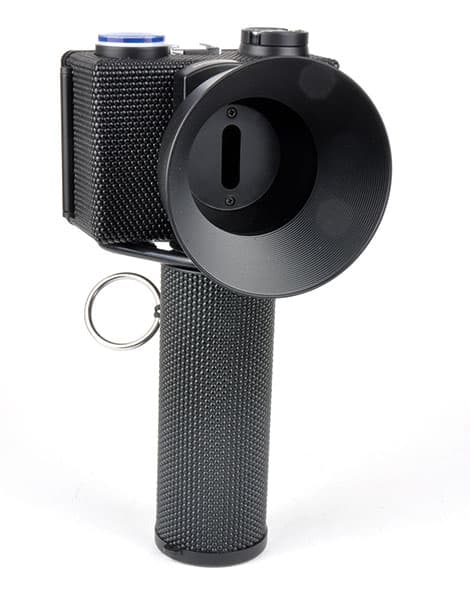
- Launched 2010
- Type Rotating
- Image size 24x165mm
- Guide price £89
Still available new from the Lomography shop, the Spinner 360° is like a cheap and cheerful version of the Globuscope. Power for the rotation comes from a thick rubber band connecting the camera to the handle. It is tensioned by pulling a cord on the side of the handle. As the cord retracts, the camera rotates.
Two apertures marked with sunny and cloudy symbols control exposure, and the speed of the rotation gives a shutter speed of somewhere between 1/125sec and 1/250sec.

